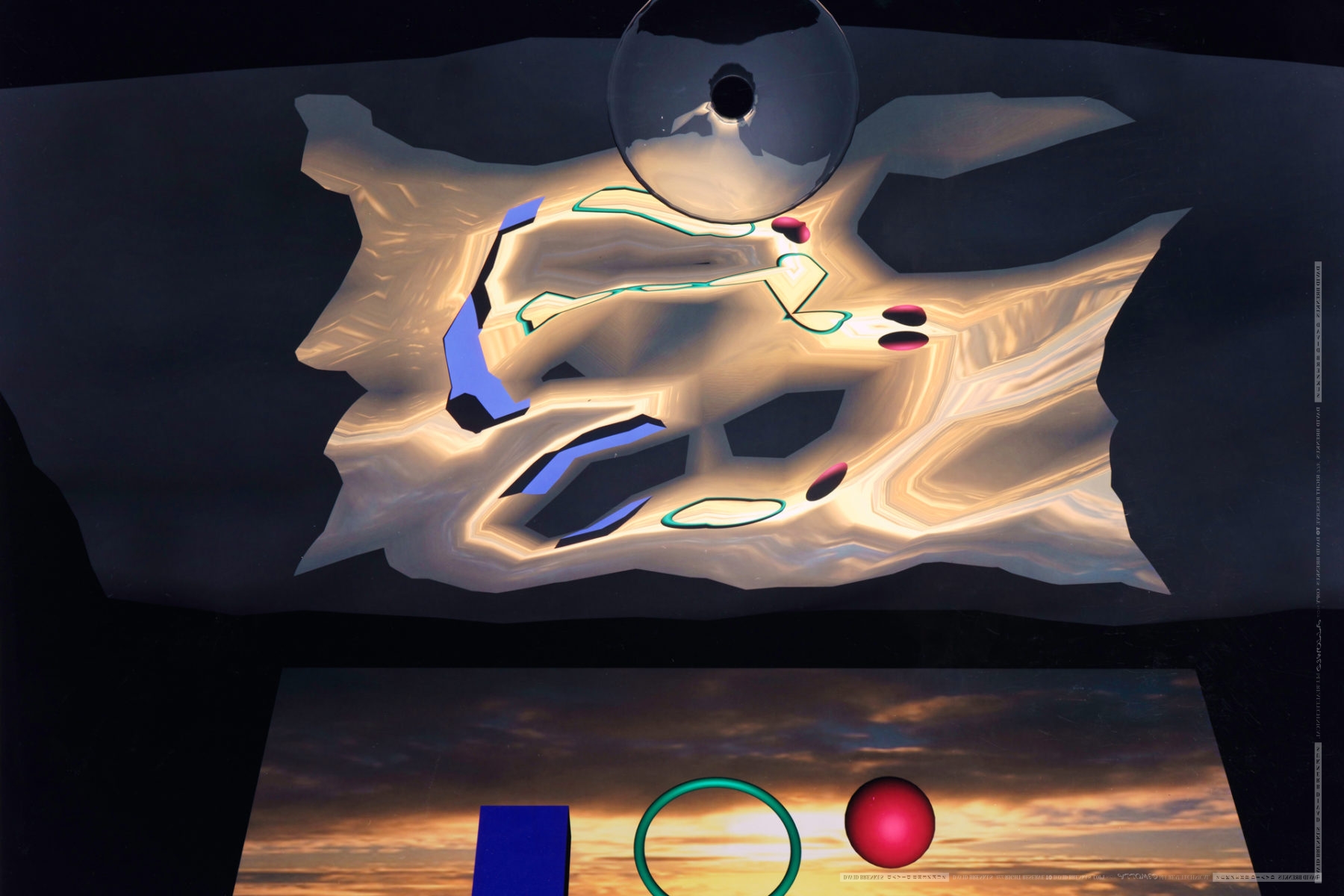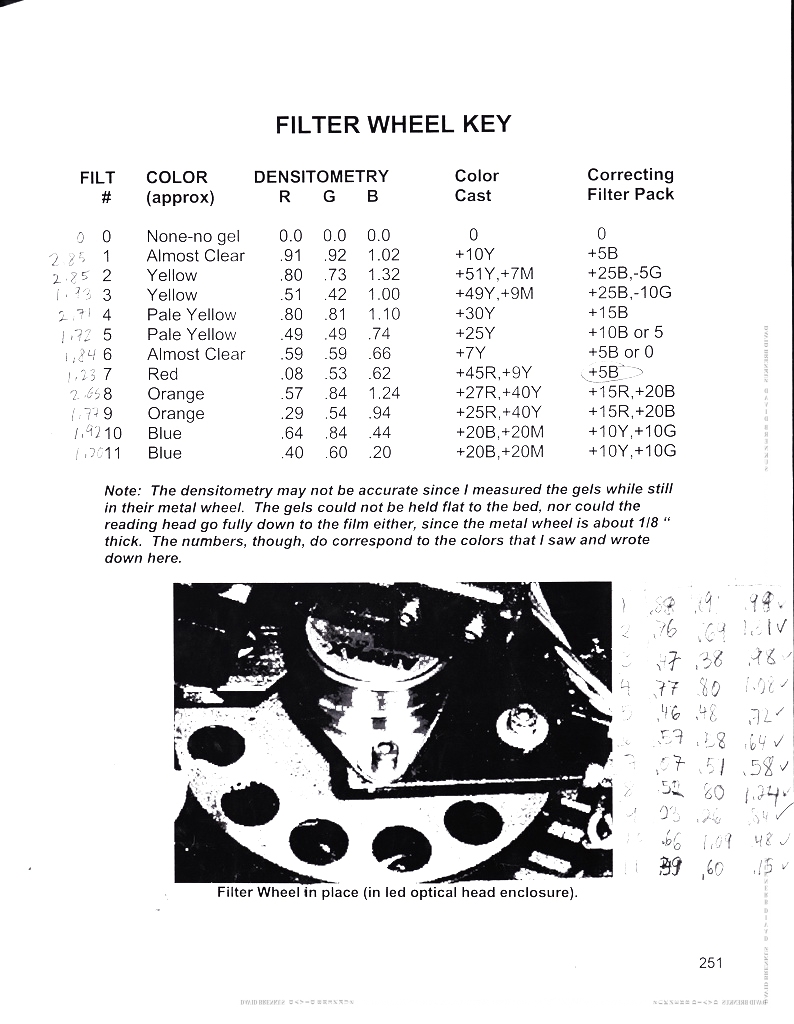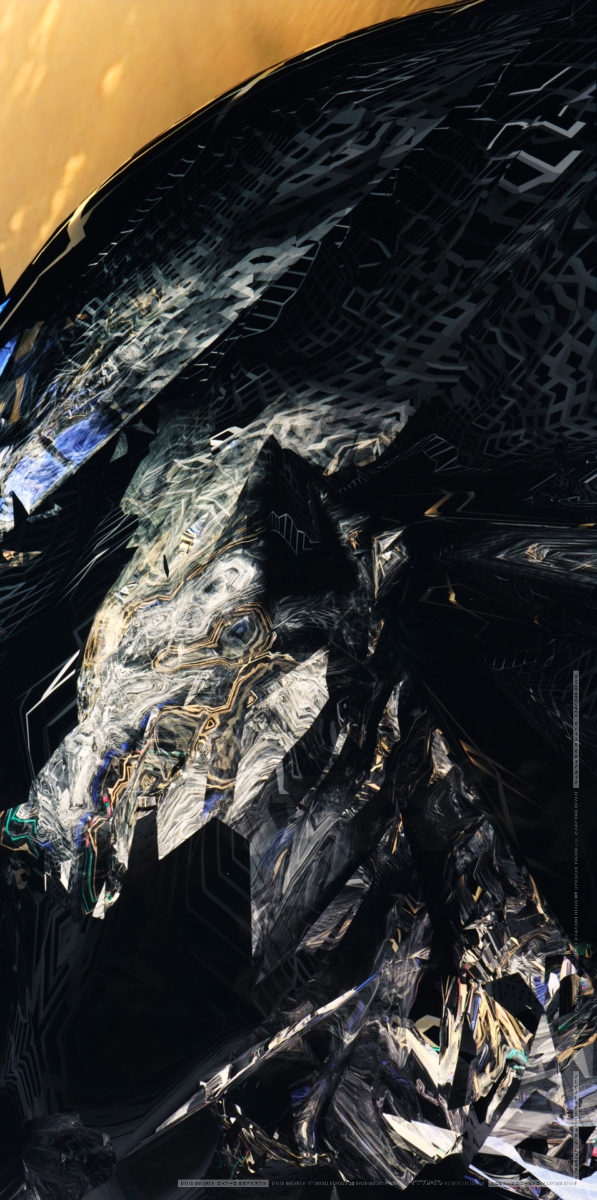MORE ABOUT SUNSET
Although I was overall pleased with the Blue Prince there were also a number of things that left me dissatisfied. Given the relative low level of light I could use, it was difficult to take a handheld shot using my shaky hands. By the time I could see this it was too late. You would have to actually use the mirror yourself to understand the impossibility of later trying to repeat a shot. A tiny whisper of air caused by walking around or opening the door to leave would move the mirror to take another shape and I had no way of even knowing the approximate positions I was in when I shot the pictures.
In the meantime I began to make a transition that would change my life. Everything that I had done in my artwork had been strictly analog so I had no need for a computer, though I was aware of the changes taking place. After all, I lived in San Francisco. My brother offered to buy me one a couple years earlier but I researched the subject and concluded that computers simply were too underpowered to deal with the high resolutions that I figured I needed. This began to change in 1998 when I calculated that it should at least be possible to work with such images using what was available. So I built my own dual processor 300 mhz computer and threw myself into learning computers. It also marked the beginning of a long period when I withdrew into solitude and for the most part stopped trying to exhibit my artwork.
My interest in computers was boundless and in the next 10 years I spent most of my time learning one part or another. I frequented computer recyclers, built and configured computers with every operating system I could get my hands on, learned how to troubleshoot, network computers and read lots of theoretical stuff on the web, which was beginning to explode at the time. My guiding passion was to gain a higher understanding of how computers work and what they mean for our way of living and working. It’s a long story so I will just come back to how it impacted my art.
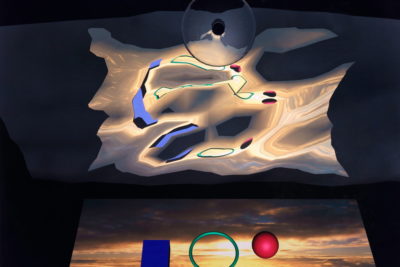
Sunset1Setup 2000
One of the many subjects that fascinated me was how Hollywood special effects were improving to the point where it became possible to create a virtual world. I found and tried out several 3D programs simply to satisfy my curiosity about how they worked. During one of these sessions, I wondered whether I could model what I had done in the basement using the Mylar mirror in 3D. It had occurred to me that I was constantly fighting gravity which caused the Mylar to only take certain shapes and not others. In a 3D model however I wouldn’t have this problem. So I decided to make a quick test of this possibility and it turned into the Sunset series.
I spent very little time on the 3D part of this whole project. It was after all a quick sort of test but it is still interesting to understand how the model and changes to it were handled by me and how it translated into the images that I am showing. I started by simply modeling my setup in the basement, with a virtual Mylar mirror and a virtual “wineglass” to please myself. The objects on the “ground” I kept extremely simple as befitted a quick experiment and I never moved them or altered them. There were 3 objects in all – a blue cube, a green torus and a red sphere – resting on a “floor” upon which was projected a low resolution image of a sunset – hence the name of the series. Therefore anytime you see red in the picture, it always originates with the red sphere you see in this foundational image. For me it was also an experiment in the minimal: how many different kinds of images could I generate from the same simple scene?
One uses a virtual camera in the program that can be moved anywhere in the 3D space to frame shots, but one can also create an animation by moving objects or camera at various points in time. I created a series of these short animations by moving the virtual camera around while changing the shape of the virtual Mylar reflector, which I doubled at one point to make it surround the scene, as well as also changing the shape and properties of the virtual wineglass which I often photographed “through”.
This project took the next 8 years of my life and was inextricably tangled up with learning about different aspects of computers. I went on many long detours and it was highly technical from start to finish. I found myself on the bleeding edge of technology as I wanted to print these pictures very large, but rendering an image took weeks because of the slow speed of computers then, even after I’d added more to create a “render farm” and was only getting a quarter of the resolution that I wanted to.
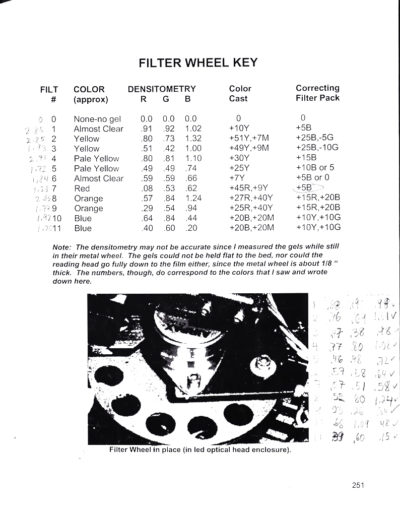
This was a filter wheel guide I made to record filters for the LVT for different film types.
The most profound series of detours was caused one key decision I made early on which was an artistic one. I’d researched digital printing and was unhappy with what I was seeing in comparison to my analog print process. At the same time, I liked the idea of presenting something computer generated as a photograph, printed from a negative. In my expanding and changing view of what photography is and my previous artwork, this seemed entirely appropriate but it made the project far more difficult.

Kodak LVT Saturn 1010 Film Recorder
It was curious to me that one heard a lot of how you could scan a print in order to get it into a computer but almost nothing about doing the opposite, taking a digital image and transferring it to photographic film. The machines that could do this existed and were called film recorders but were fantastically expensive. They were used in the main by the publishing industry to bridge the time before the whole print and layout process for magazines could be done on the computer. Photographers continued to shoot on film but increasingly the images were digitally retouched. Magazines though were still doing their layout from analog photos, so the recorders were used to get 8×10 slides shot of the final image. One person I knew referred them to money printing machines, the trade was so lucrative.
It took years until these machines became finally obsolete and after a long process of researching the subject I finally purchased my own Kodak LVT – the Cadillac of film recorders – for $500 in 2004. This machine (circa 1990), nearly the size of a refrigerator and about as heavy, had retailed for $125,000. I spent the next several years learning how to use it in a long project all its own that was part computer archaeology. My task was complicated by the fact that my recorder was an older model driven by a very old “vax” computer – a DEC Alpha in fact – running the VMS operating system. I ultimately reconstructed a large part of the corporate directory that had been long since dissolved and contacted and befriended some of the former employees because there was next to nothing about these machines on the internet. I learned the most from one very kind former employee who became a close friend and mentor over the course of a year. I learned from another how to repair my machine when it stopped working and much more.
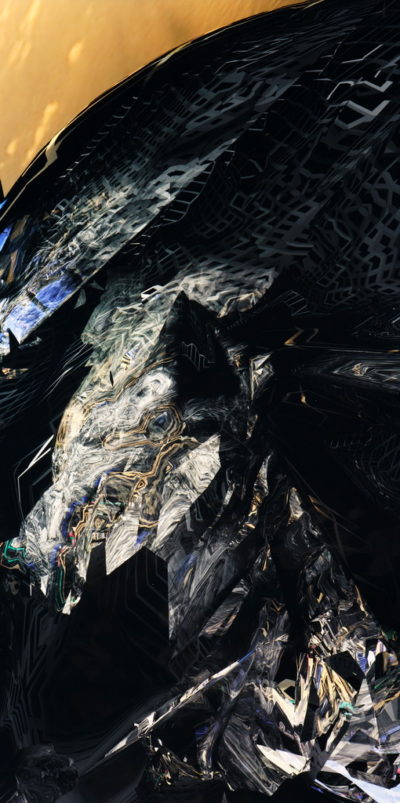
51-Wire-Mir2-301j0019-100T-1K 2000-08
Along the way I went on a related but distinct detour that caused me to teach myself to program which again changed my life. This sub-project was entirely based on finding a way to improve the calibration of the machine beyond what Kodak had done. Even though the recorder used the more stable and new for the time LED lights to make the exposure, the negatives I made didn’t print like my old ones. They were finicky and had almost no color latitude. The great thing about my earlier color was I could experiment to find the color that pleased me. The chemical processes I used caused the colors to separate so shifting the filtration in printing altered a lot and sometimes gave you other interesting choices. So I began to program and do test after expensive test, shooting 8×10 grayscales, measuring them with a variety of devices I acquired, and altering my calibration program as I went along. I was working on several new and promising ideas when the project was terminated prematurely for me in 2008 with the arrival of the Global Financial Crisis. One effect of the crisis was the color lab I had worked with for years suddenly went bankrupt and closed their doors. I had spent years working with them and thousands of dollars on film and processing but the page had turned.
Luckily for me, I spent a considerable amount of time shooting out film with the machine as I tested and improved my process and printed the results. I used 8×10 film exclusively, but I experimented with even more film stocks and chemical processes than I had done before. I had improved the process enough for me to generate finished prints for many images from several film stocks and the altered processes.
This project was very different from what I did before in that it took years to accomplish. Happily it turned out to interest me even more than what I had done before, not only the process of it which kept me engaged and taught me a lot but the result. Of all my photos, today I am most fascinated by them.

